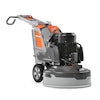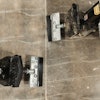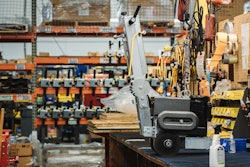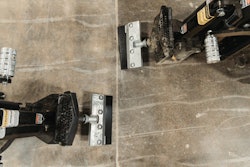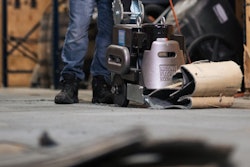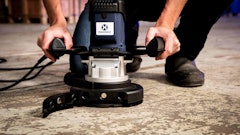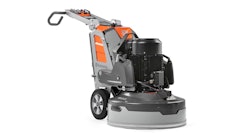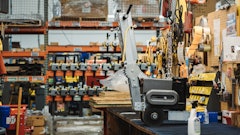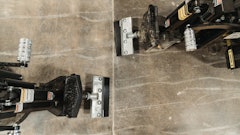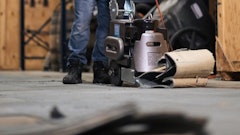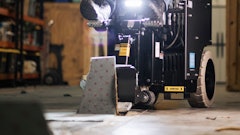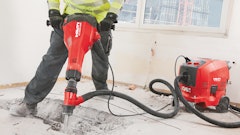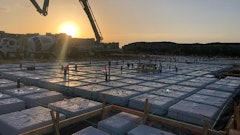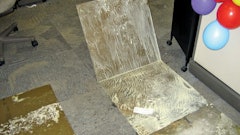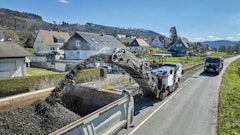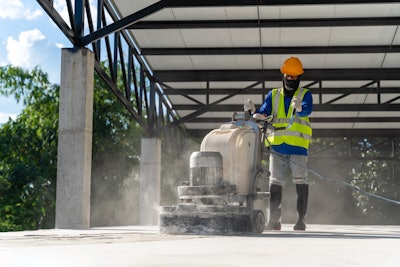
When I look at today’s polished concrete equipment I see a large variety of available equipment, styles, types, and options. Most true concrete polishing machines are planetary, whereas most surface preparation machines are counter rotary style. You can still polish with counter rotary machines. And with planetary, you can do surface prep. I know it’s a little confusing. How do you know what type of machine you should be operating? What kind of tools are best for your machine? What kind of power should I look at - high voltage, single phase, propane?
There are a lot of decisions to be made when looking at equipment. The first thing to consider is what type of work you mostly do. We talk to a lot of guys that perform surface prep only for coatings or other surfaces. For that type of work, a counter rotary gear-driven machine will perform the best. Gear-driven machines (as opposed to belt-driven) can deliver more torque to the floor when dealing with coating removal or heavy cementitious membranes. They tend to grind faster because of the direct transfer of power to the floor, and extra head weight. You can still polish with these grinders, but they require more skill by the operator, using oscillation to prevent striping the floor.
Larger Jobs - Another factor to consider is production, how big an area do you typically deal with? 5,000 sq ft.? 50,000 sq. ft.? The bigger floors will require larger platform machines. If I were only polishing large areas (over 20,000 sq. ft.) I would look at a power trowel system. These systems are super-fast, wet-cutting systems. Not for coating removal or demolition but great for polishing.
You will however need to learn about slurry removal, treatment, and disposal. There are companies that can help you with that.
Smaller Jobs - If your work is primarily small to medium-sized polishing projects, then you may want to consider a smaller platform planetary grinder. Planetary machines are more forgiving for novice polishers and are less likely to produce striping or tracking lines. These can be gear or belt-driven machines. Single-phase power or even propane, great for residential or small commercial retail. Easy to mobilize and get onsite, great for small areas or hallways. These machines are also great for polishing cementitious overlays or doing mock-up panels for a larger project. There are also some hybrid-type machines in the marketplace: two-motor machines that can run the heads in two directions at once (planetary) or turn the heads in the same direction (counter rotary). These machines have some advantages but require an engineering understanding to operate them properly. I would not recommend these for beginners.
Standard Features - Other factors or features you may find useful will depend on what the manufacturer offers as “standard equipment.” Some of the more innovative features I’ve seen over the last few years include multi-position weight kits, allowing you to add or remove head weight as needed for the job you’re doing.
Battery transport systems are also useful when mobilizing on and off projects or loading from a trailer using a ramp. These machines have a travel wheel that can be removed when not in use and allow you to move a heavy machine without manually pushing.
Remote control machines have been in use for several years but recent improvements in software allow for more features such as oscillation control and water jet switches.
Another feature I like is machine-mounted lighting, LED lights in the front and behind the machine where the operator stands is a great feature, especially when working nights where there may be a lot of shadows or low light areas.
A lot of machines come with built-in water tanks, depending on whether you are a wet or dry polisher you may find this feature useful. If you are a primarily a wet polishing contractor, I would look at the tank capacity to see how much it can hold. Also, electronic dispensing control is great for this type of use.
Having proper pick points on a machine frame is also a great safety feature, making it easy to lift the machine, (these should be clearly marked).
Any concrete grinder today will be equipped with a dust shroud, so when connected to a vacuum system the operator can work dust free. This is mandatory for compliance with the OSHA Silica rule.
Maintenance - Other considerations would be machine maintenance requirements. For example, what is the interval for changing the gear oil for gear-driven machines? For belt-driven machines, how often do you need to tension or replace a belt?
Make sure the electronic box is well-sealed and ventilated to prevent overheating. The control panels or remote-control features should be clearly marked and easy to understand.
Tooling - The type of tooling plates should be considered. Make sure you are able to run the tooling you need for your project requirements. Some manufacturers offer universal plates that can accommodate many different styles of tooling while others are proprietary and only allow you to run one type of tool. The style of the coupler for the tooling plates can also vary from very soft to very firm or hard. Harder couplers will help cut a flatter surface, good for coating removal, but tend to expose more aggregates when riding over a high point in the floor. Softer couplers are more forgiving for polishing, allowing the machine to follow the floor. These soft couplers will wear out more quickly. Check them often to make sure they are in serviceable condition.
Power - When it comes to power, I like to look at the amp draw of a motor vs horsepower. For example, a higher horsepower (or KW motor) will draw more amps than a smaller one. Going to a high-voltage unit will reduce the amp draw required for the machine. There is a learning curve to all of this, some of you know what you like and what you need. Others may just be starting out and need to discover that perfect machine for your company. Ask around and demo a machine when you can so you can try before you buy. A lot of distributors and manufacturers have demo machines you can rent or try out so you can see what works best for you.


